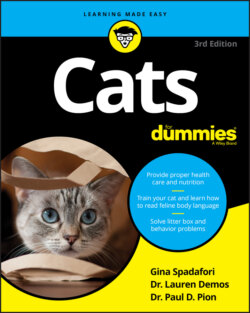Читать книгу Cats For Dummies - Gina Spadafori - Страница 12
THANK YOU, EDWARD LOWE
ОглавлениеOne other thing made the transition of the cat from pest control to pet possible — or, rather, one person: Edward Lowe, the inventor of Kitty Litter.
Prior to Lowe’s brainstorm, cats either went outside to relieve themselves — as many still do, to the unhappiness of many a neighboring gardener — or went in boxes filled with sand, soil, or sawdust, none of them a very practical solution for easy clean-up and smell control.
In 1947, cat lover Kaye Draper of Cassopolis, Michigan, sought sawdust for her cat’s box from a local business. The firm also sold kiln-dried, granulated clay for cleaning up grease spills. Edward Lowe, son of the shop’s owner, suggested that the woman take home some of the absorbent clay instead, and an industry was born.
After she came back for more, Lowe decided he was on to something. He put the clay in five-pound bags, wrote “Kitty Litter” on the front, and suggested to a local store owner that he sell the bags of clay for 65 cents — at a time when sand went for a penny a pound. The owner laughed, so Lowe then changed strategies: “Give it away,” he said, “and see how it does.”
Kitty Litter made Lowe, who died in 1995, a millionaire many times over. The name of Kaye Draper’s cat somehow escaped being recorded for posterity. We think a little credit is due to him (or her), too.
(For more on cat-box fillers — how to choose them and how to use them — see Chapter 11.)
